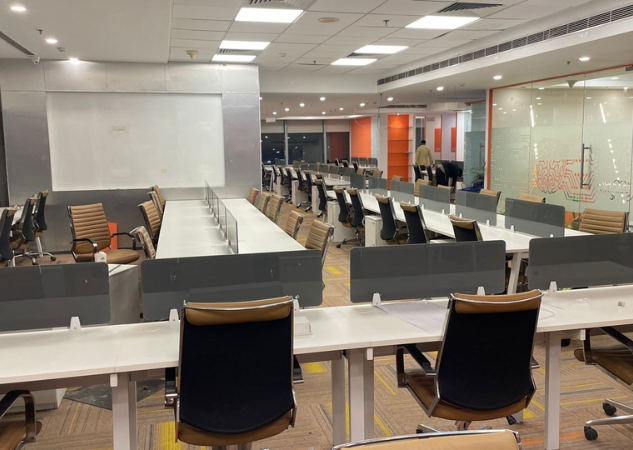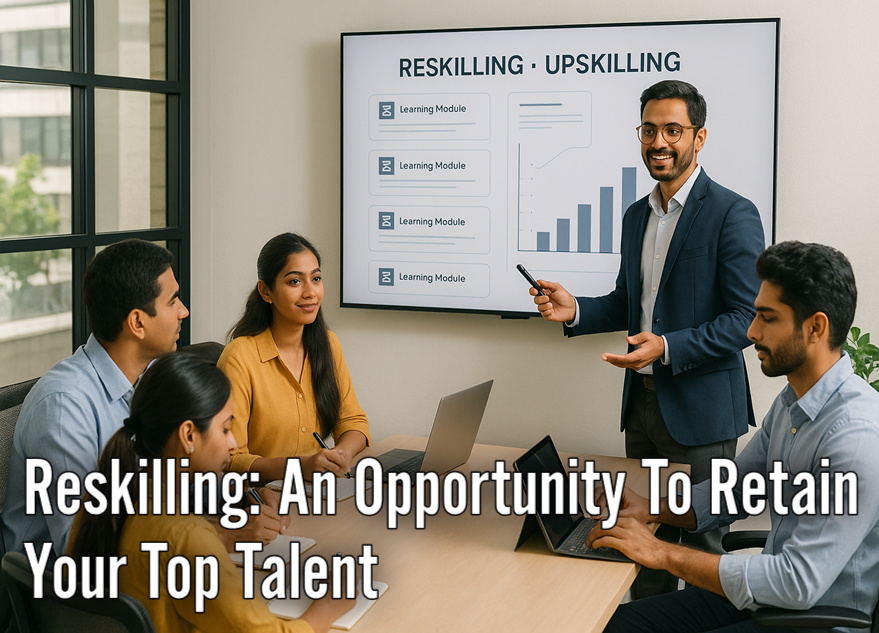In today’s rapidly changing business environment, organizations must continuously adapt to remain competitive. One of the most effective strategies for maintaining a competitive edge is reskilling your workforce. Reskilling involves training employees in new skills that allow them to perform different or more advanced tasks. This not only helps organizations to meet evolving business needs but also plays a crucial role in retaining top talent. This blog aims to acquaint you with 10 key points on how reskilling can help you retain your best employees.
💡 Are you looking for Coworking space in Gurgaon, Noida or Delhi? We are just a call away.
Call Now: 08999 828282
10 Key Points on How Reskilling can Help You to Retain Your Top Talent
- Adaptation to Technological Changes
- Increased Employee Engagement
- Career Progression
- Cost-Effective Talent Management
- Improved Employee Morale
- Future-Proofing the Workforce
- Enhanced Organizational Agility
- Retention of Institutional Knowledge
- Competitive Advantage
- Positive Employer Branding

1. Adaptation to Technological Changes
The rise of automation and artificial intelligence is transforming industries at an unprecedented pace. Reskilling helps employees adapt to these changes, ensuring they remain valuable assets to the company.
2. Increased Employee Engagement
Providing opportunities for learning and growth boosts employee engagement. When employees feel that their employer is investing in their future, they are more likely to stay committed to the organization.
3. Career Progression
Reskilling opens up new career paths within the company. Employees who see a clear progression path are more likely to stay, reducing turnover and retaining valuable experience within the organization.
Also Read: How Does Hybrid Working Attract and Retain Top Talent?
4. Cost-Effective Talent Management
Hiring new talent can be costly and time-consuming. Reskilling existing employees is often more cost-effective, as they are already familiar with the company culture and processes.
5. Improved Employee Morale
Investing in employee development demonstrates that the company values its workforce. This boosts morale and fosters a positive workplace culture, which is essential for retention.
6. Future-Proofing the Workforce
As industries evolve, the demand for new skills emerges. Reskilling ensures that the workforce remains capable of meeting future demands, providing a buffer against market volatility.
7. Enhanced Organizational Agility
A reskilled workforce can quickly adapt to new roles and responsibilities, making the organization more agile and responsive to market changes and new opportunities.
8. Retention of Institutional Knowledge
Long-term employees possess valuable institutional knowledge that can be difficult to replace. Reskilling allows these employees to stay and continue contributing their expertise.
💡 SMBs looking for HR, Marketing, Technology and Funding solutions for their business.
Call Hello Jarvis 994 8000 800
9. Competitive Advantage
Organizations with a skilled and adaptable workforce are better positioned to innovate and stay ahead of competitors. Reskilling ensures that the company remains at the forefront of industry developments.
10. Positive Employer Branding
Companies known for investing in employee development attract top talent. A robust reskilling program enhances the company’s reputation as a desirable place to work, making it easier to attract and retain high-quality employees.
To conclude, reskilling is not just a strategy for addressing skills gaps; it’s a powerful tool for retaining top talent. By investing in the development of your employees, you create a more engaged, capable, and loyal workforce, positioning your organization for long-term success. Come and set up the office at The Office Pass (TOP) co-working spaces available in Delhi and NCR to enjoy all the modern-day facilities. Contact us for more details at 08999 828282.
FREQUENTLY ASKED QUESTIONS (FAQS):
Question: What is reskilling?
Answer: Reskilling involves training employees in new skills to perform different tasks or more advanced roles within the organization. It helps employees adapt to changing job requirements and ensures they remain valuable assets to the company.
Question: Why is reskilling important for retaining top talent?
Answer: Reskilling is crucial for retention because it demonstrates the organization’s commitment to employee growth and career development. This investment in their future increases employee loyalty and engagement, reducing turnover rates.
Question: How does reskilling benefit the organization?
Answer: Reskilling benefits the organization by creating a more adaptable and skilled workforce, reducing hiring costs, enhancing employee morale, and maintaining a competitive edge in the market. It also helps retain valuable institutional knowledge.
Question: What types of skills are typically targeted in reskilling programs?
Answer: Reskilling programs often target digital skills, leadership and management skills, technical skills related to specific industries, and soft skills such as communication, problem-solving, and adaptability.
Question: How can companies identify which employees need reskilling?
Answer: Companies can identify employees who need reskilling through performance reviews, skills assessments, and by analyzing future business needs and technological trends. Employee feedback and career aspirations should also be considered.
Question: What are some effective methods for reskilling employees?
Answer: Effective methods for reskilling include online courses, workshops, mentoring and coaching, on-the-job training, job rotations, and partnering with educational institutions for specialized training programs.
Question: How can companies measure the success of reskilling programs?
Answer: Companies can measure the success of reskilling programs through employee performance metrics, retention rates, employee feedback, and the ability to fill new roles internally. Monitoring business outcomes related to the newly acquired skills is also crucial.
Question: How can reskilling programs be aligned with business goals?
Answer: Reskilling programs should be designed based on current and future business needs, industry trends, and technological advancements. Aligning these programs with strategic goals ensures that the skills developed are relevant and beneficial to the organization.
Question: What role do managers play in the reskilling process?
Answer: Managers play a vital role in identifying skill gaps, supporting employees in their development, providing feedback, and creating opportunities for employees to apply new skills. They also need to foster a culture that values continuous learning and growth.
Question: How can companies encourage employees to participate in reskilling programs?
Answer: Companies can encourage participation by clearly communicating the benefits, offering incentives, integrating reskilling into career development plans, providing flexible learning options, and creating a supportive learning environment.



